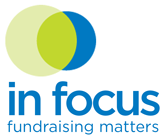Recent Posts
- The Secret Sauce: Strategies & Tactics to Engage Institutional Funders
- What Are Your Donors Saying When They Go Quiet? And How Should You Respond?
- Maximizing Year-End Giving: Strategies for a Successful Fundraising Campaign
- Navigating 2024’s Unique Year-End Fundraising Landscape
- Latest Giving USA Data
- How to Flex Your Case for Support to Raise More Money
- Maximizing Potential of Donor-Advised Funds: Strategies You Need To Know
- Major Donors: Cultivating Relationships & Forging Strong Ties
Why Your Board Is Not Giving & How To Shift Tactics
Written by Nadine Gabai-Botero
February 14, 2023
What if a board member lets you know that they want to help guide your organization’s strategic direction and are able to share their expertise with staff between meetings, but they were not able to meet their fiduciary responsibilities as a board member?
That would be a deal-breaker, wouldn’t it?
The Importance of Board Giving
Well, I believe making a donation as a board member is as important as financial oversight, in part because donations by the board help to demonstrate their commitment to your mission, encourage other donors to make their own gift, and often, helps assure institutional funders that those in a governance role are invested in their role and the nonprofit.
But, the reality is that the board giving percentage varies widely. One study shows that just over half of boards have 100% participation.
I hope your board isn’t one of them. But if it is, what’s your plan to change your board’s culture?
In my 25+ years as a fundraiser, board members who don’t make a donation and won’t get involved with any aspect of development are a persistent challenge. I emphasize “any aspect” because there are many ways to engage in fundraising -- from calling to thank donors or attending events to joining funder meetings or inviting friends and colleagues to an event. But making a donation -- whether it’s $50, $250, $1,000 or more -- is one of the most important ways for board members to demonstrate their support.
How to Get Your Board To Donate
The good news is that you can have the board you want with engaged members who make donations, but it may take time and your focused attention to get there. The pay-off (literal and figurative) will be worth it. Here are some steps you need to take:
- Make Sure their Giving and Fundraising Requirements are Part of the Interview Process. In this past blog post, I detailed what to include in your initial conversations with potential board members, including sharing specific skill sets you are looking for and your expected level of support and engagement. Those initial meetings are not a time to hedge and focus elsewhere; you must address their involvement and your expectations directly and gauge their response.
- Focus on Your Board Culture. The written and unwritten rules that influence member activities and the ways in which members interact with each other and make decisions all make up your board culture. When it comes to shifting culture, you may be up against practices that were instituted years before you arrived, so slow and steady progress should be your goal. Like any culture shift, you must clearly name the challenge, share the issue(s) when the time is right, and identify who on the board can serve as a leader and an ally to help make the shift. Boardsource, a recognized leader in nonprofit board leadership research and support, details why “Give or Get” policies are so important and how to push back against long standing attitudes that become a part of the group’s dynamic.
- Make the Ask. And Celebrate Board Members Who Give & Get (it). Whenever you’re trying to change attitudes or behavior, positive reinforcement always wins over reprimands. If you’ve only had 30% of your board make a donation in the past, your first step is to thank those who have given -- both privately and when the board is assembled -- while reiterating that you’re seeking 100% support from the board. Ideally, the board chair makes that announcement, but the development or finance chair could also do it. Immediately after the meeting, the board chair and/or development committee chair should follow with an email and call to each board member who hasn’t given yet to secure their pledge.
- Be Persistent & Consider Who Should Stay On. At each board meeting, make a point to celebrate your new percentage of board giving, and remind all those in attendance (again) of the importance of their support. After that meeting, the board chair and/or development committee chair should again email and make calls. Yes, there will be some who avoid your calls, don’t respond to email, and ignore any mention of their support. This is an issue the board chair should address quickly. When it comes time for board renewals, think about the value these members bring to the board. They may be “giving” in important, non-monetary ways and if so, that may be enough to ask them to continue to serve while stressing that a donation of any amount counts toward the percentage goal. But, when you consider what the average American spends on Starbucks coffee in a year ($1,100!), it’s likely that the culture of giving is not strong enough on your board and you must make a case for a meaningful gift to your organization.
Change is never easy, but it can be manageable when you look at all of the options available to you. We can help you navigate the process, identify your goals and implement strategies that will turn those goals into reality. Good luck and reach out if you have questions about engaging your board or changing the culture of giving at your organization.

